36 Coding Timelines
By: Brennan Halsall
Coding Timelines
Students will use Scratch to code an interactable timeline of Canadian history in the 20th century (or any time/place) that scrolls forwards and backwards.
Introduction:
- Start off by showing the class a couple of examples of timelines for other historical events or nations.
- Ask the class to consider what they’ve learned. What are timeline-worthy events discussed in class?
- Discuss why timelines can be useful in visually representing history, continuity and change.
- Then have students try to make their own!
Working Process:
- Provide students with a Scratch file that contains the timeline itself, but no dates or events and the actual movement not yet coded.
- Show the class how to add the scrolling effect (see this video for more info: https://www.youtube.com/watch?v=T1T8mQqTgwk&t=76s)
- Then, get everyone to make their own timelines of Canadian history. Emphasize that they can use their own discretion on what to include. It can be a big, broad political history timeline, a social one, pop culture one etc.
- Circle around the room and help students out as needed.
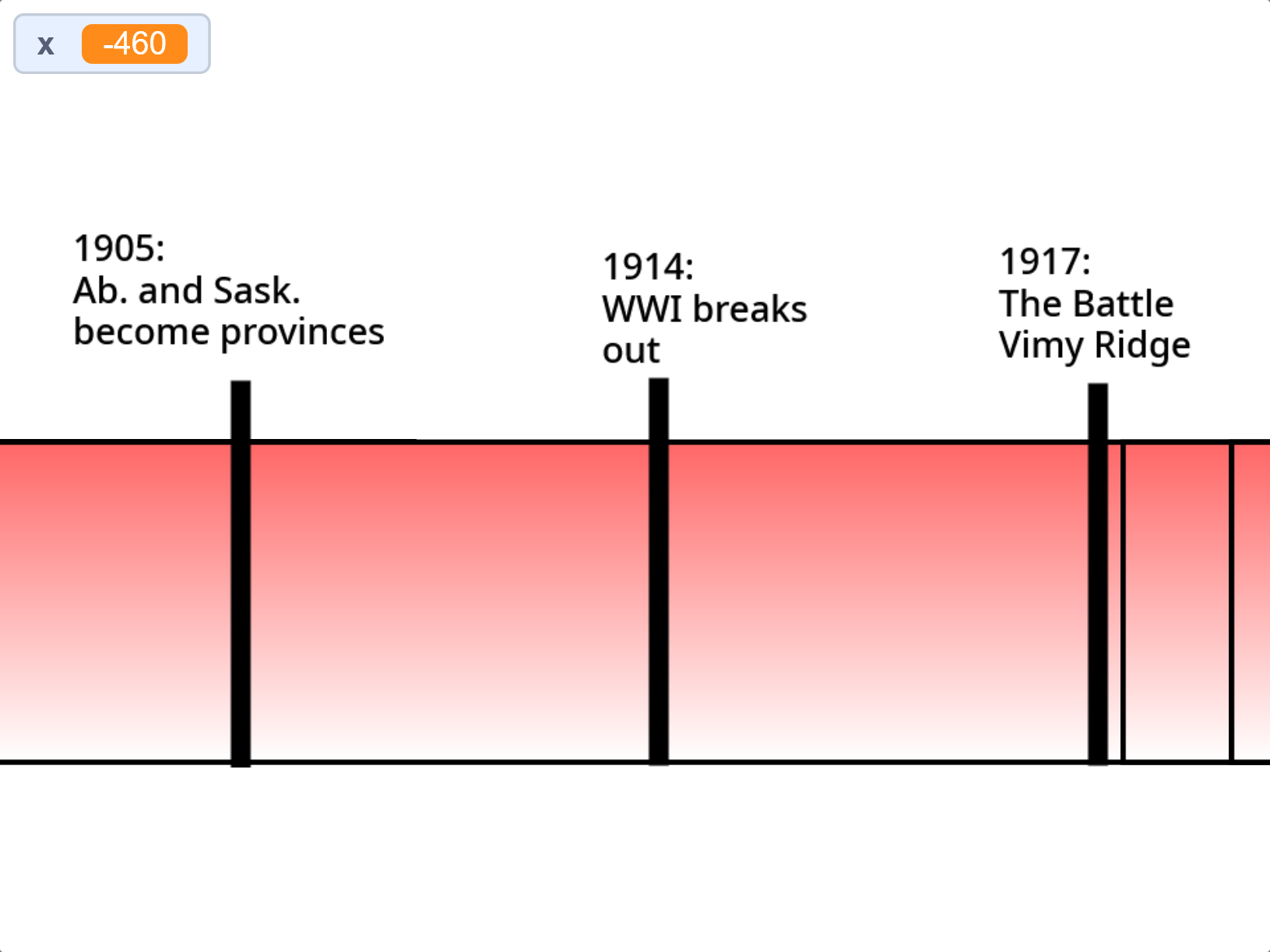
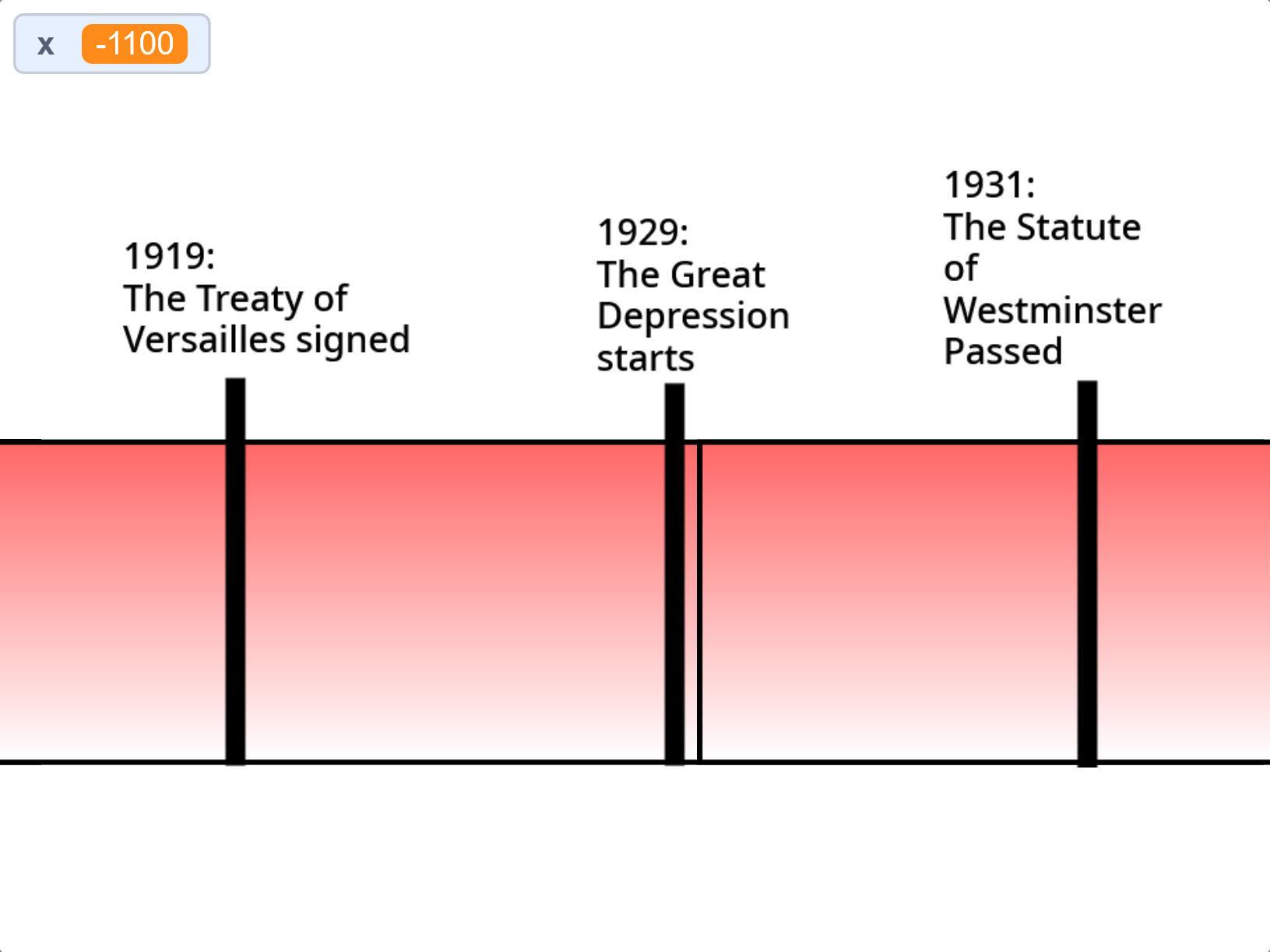
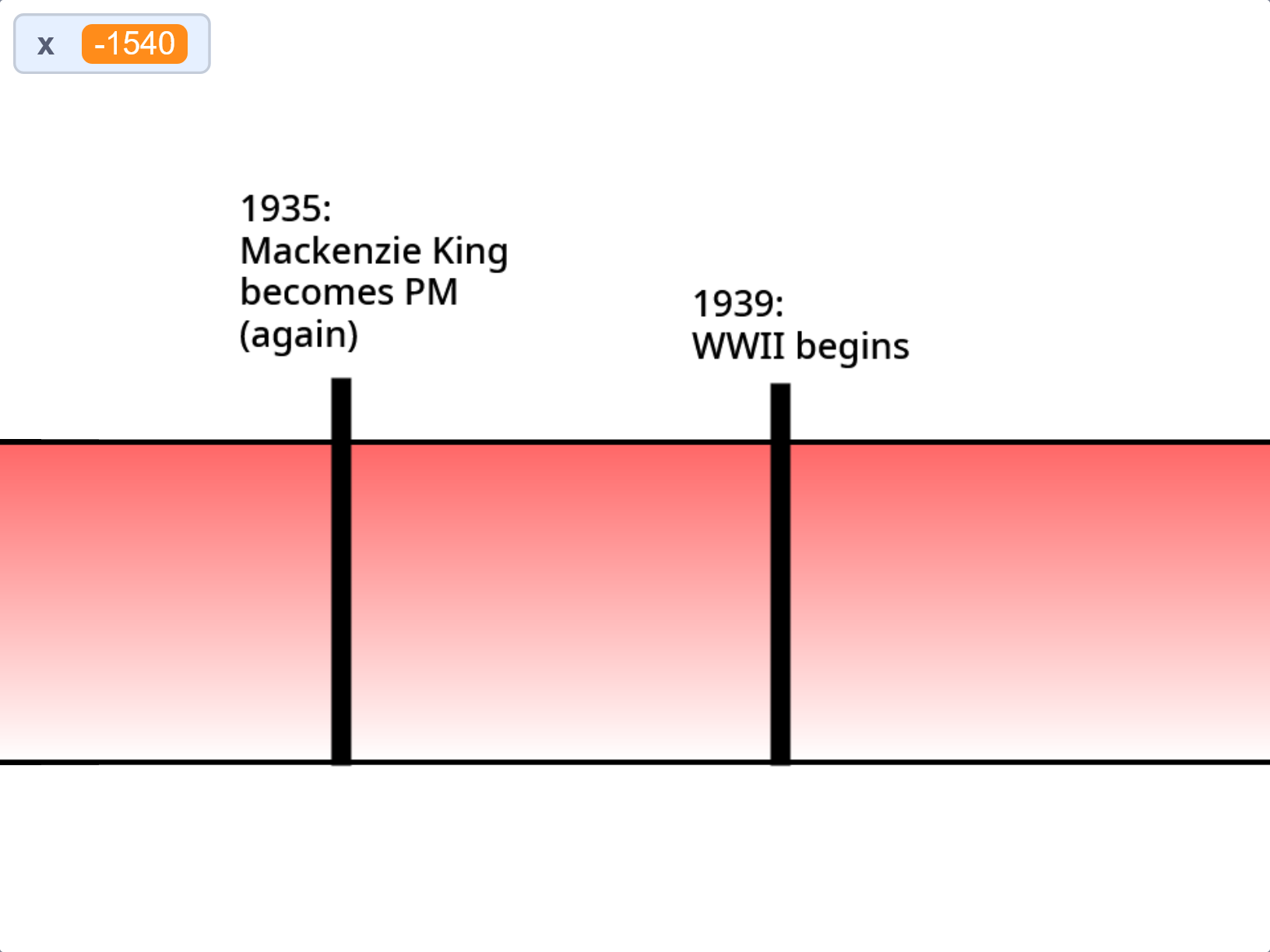
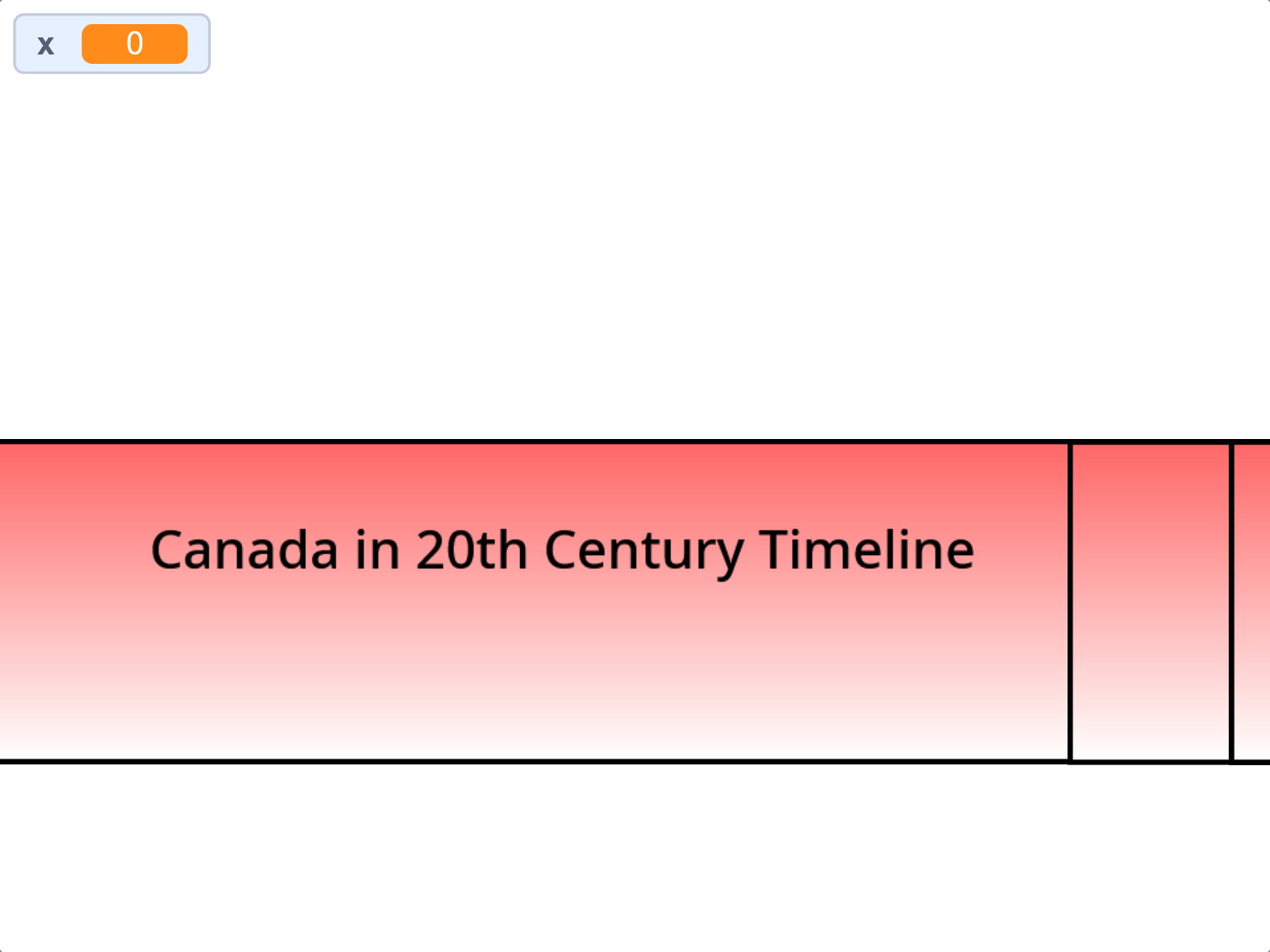

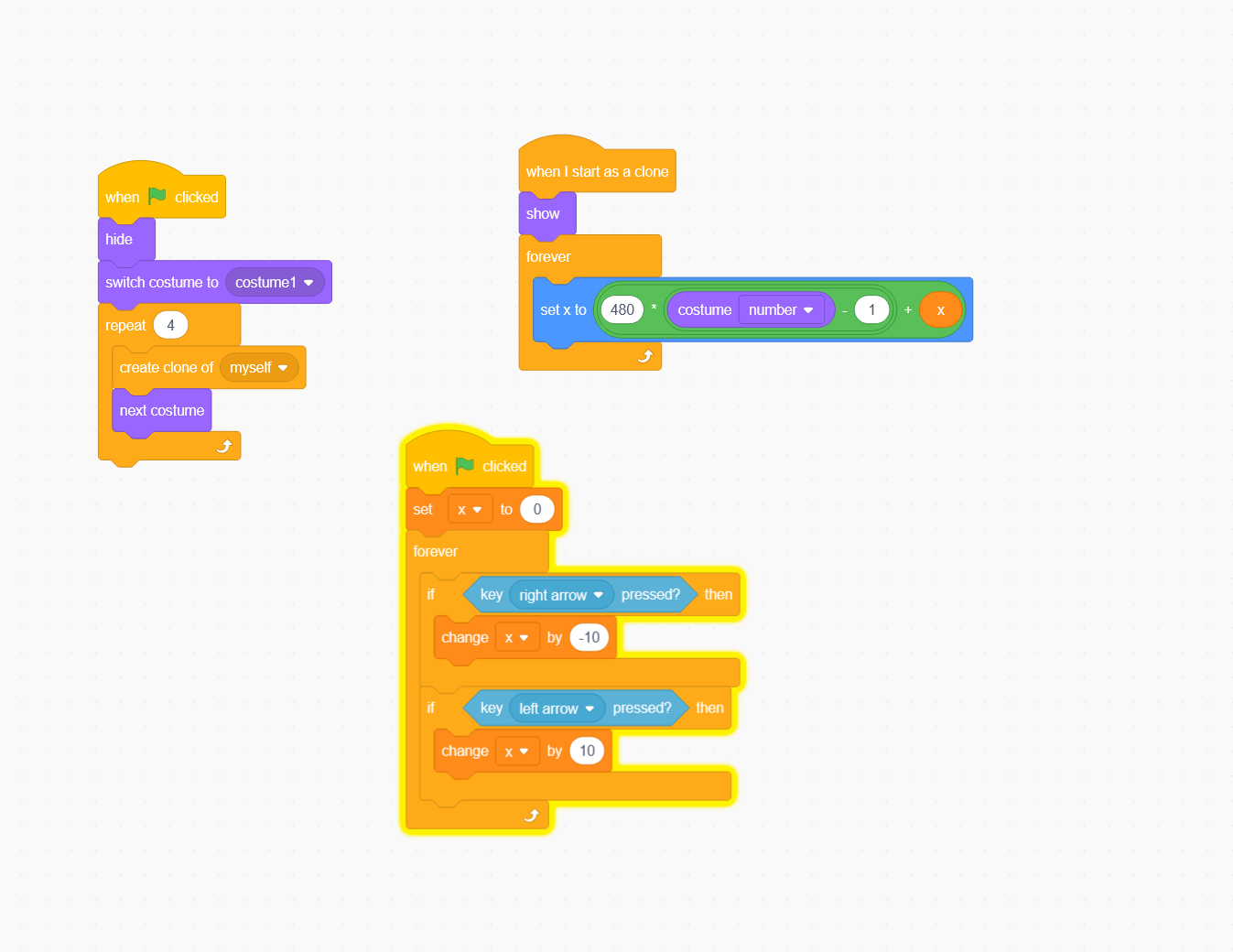
Consolidation:
- Have students submit their timelines.
- Ask if anyone wants to share their timeline with the class and watch it on the Smartboard.
- Discuss the creating process.
- Ask questions about how our coding relates to history, like “Did making timelines help you visualize when events we’ve learned about happened relative to each other?”
Resource Information:
Tags: History, Timelines, Continuity
URL Link to Code: https://scratch.mit.edu/projects/1145530337
Other Integrated Subjects: Computer Science
The idea behind this lesson of making timelines could be used in English, Geography or even Science classes.
Media Attributions
- Timeline on Scratch 5
- Timeline on Scratch 4
- Timeline on Scratch 2
- Timeline on Scratch 3
- Timeline on Scratch 1
- Code Blocks
